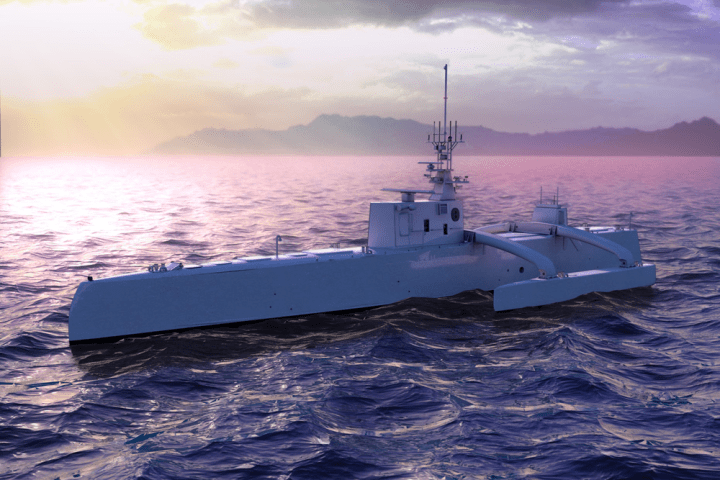
Once functional, DARPA intends to use the ACTUV to “robustly track quiet diesel electric submarines,” and expects it to serve three primary goals. First, the agency plans to test the effectiveness and efficiency of using an autonomous vessel in the field, hoping to avoid placing even one human on such a ship. Secondly, DARPA looks to display the range the ACTUV is capable of covering on missions while remaining autonomously compliant with maritime laws. And finally, it hopes to demonstrate the drone’s unique ability to track and follow even the quietest of submarines over long distances.

Perhaps the most intriguing part about the ACTUV is how adaptable its technology is, and the myriad of different applications it could have in other sectors of American’s armed forces. For instance, at a recent Association of Unmanned Vehicle Systems conference, the agency pointed out how the U.S. Navy has already contacted the organization to inquire about using the drone for detecting mines. The technology that the ACTUV is founded on has an incredibly broad range of potential uses.
Additionally, DARPA estimates that use of the vessel would cost drastically less than that of a typical naval destroyer, operating on roughly $15k to $20k per day — compared to around $700k per day for a traditional warship. The agency also noted how the drone has the ability to carry a larger payload than conventional ship-launched surface vehicles, and also possesses the capacity to operate entirely on its own, launching and returning to a pier without any kind of human intervention. Because of this, a companion ship isn’t required, which saves even more time and money.
According to DARPA’s Tactical Technology Office program manager Scott Littlefield, roughly 90 percent of the vessel’s hardware construction is finished, leaving just the ship’s software system left to complete. During the course of manufacturing, the team routinely tested the ACTUV’s command-and-control and navigation system against the compliance requirements for the International Regulations for Preventing Collisions at Sea. By using a 40-foot workboat, DARPA had the ability to see how the system reacted on the fly.
“Generally we’re there,” Littlefield pointed out at the conference. “Generally meets expectations.”
While “generally” allows for DARPA to move on to the next phase of builder’s trials scheduled for early 2016, Littlefield acknowledges the hardest part of the project is manufacturing a drone which “is about as reliable as a vessel operated by experienced mariners.” Further testing of the ACTUV is set to run for around two years at San Diego’s Point Loma, and when all the software bugs have been ironed out, the ship will finally be ready for its maiden voyage.
Editors' Recommendations
- DARPA tests drones that can be dropped from planes and collected in midair
- U.S. Army takes its pocket-sized reconnaissance drone to Afghanistan
- Parrot to build small surveillance drones for U.S. soldiers on the battlefield
- Future underwater robots could charge their batteries by eating fish poop


